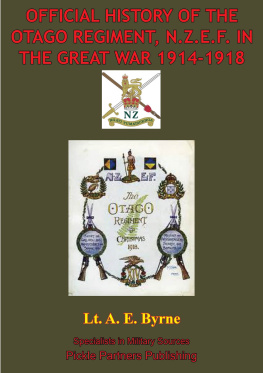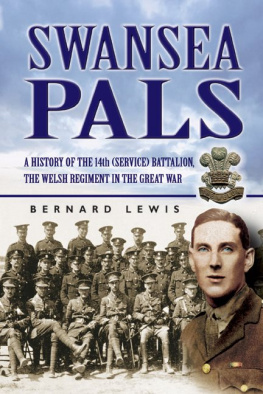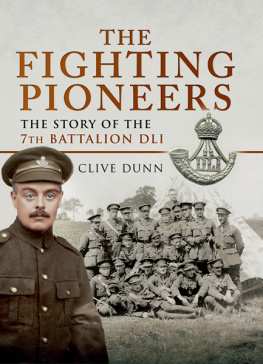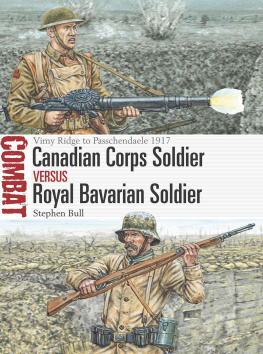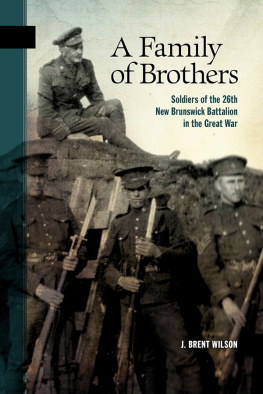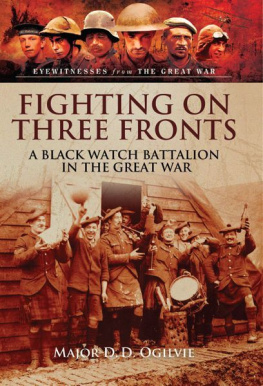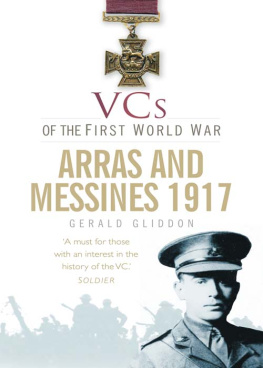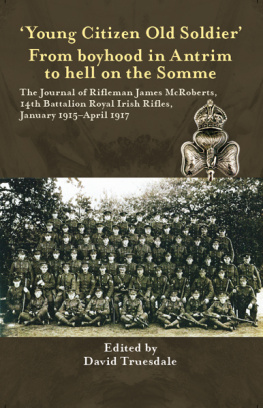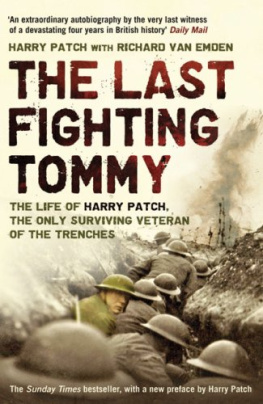LETTERS
from the
TRENCHES


First published in Great Britain in 2009 by
Michael OMara Books Limited
9 Lion Yard
Tremadoc Road
London SW4 7NQ
This electronic edition published in 2012
ISBN: 978-1-84317-833-0 in ePub format
ISBN: 978-1-84317-832-3 in Mobipocket format
ISBN: 978-1-84317-373-1 in hardback print format
Copyright Bill Lamin 2009
Maps copyright Bill Lamin 2009
The illustration on the half-title page shows a cap badge of the York and Lancaster Regiment from the Great War (York and Lancaster Regimental Museum, Rotherham)
The right of Bill Lamin to be identified as the author of this work has been asserted by him in accordance with the Copyright, Designs and Patents Act 1988.
Every reasonable effort has been made to acknowledge all copyright holders. Any errors or omissions that may have occurred are inadvertent, and anyone with any copyright queries is invited to write to the publishers, so that a full acknowledgement may be included in subsequent editions of this work.
All rights reserved. You may not copy, store, distribute, transmit, reproduce or otherwise make available this publication (or any part of it) in any form, or by any means (electronic, digital, optical, mechanical, photocopying, recording or otherwise), without the prior written permission of the publisher. Any person who does any unauthorized act in relation to this publication may be liable to criminal prosecution and civil claims for damages.
A CIP catalogue record for this book is available from the British Library.
Designed and typeset by Design 23
www.mombooks.com
To the memory of Harry Lamin and his comrades of the Great War
PREFACE
H ARRY L AMIN WAS AN unexceptional man who lived through the exceptional horrors of the First World War. Through his letters from that time we can gain some insight into the fate of the ordinary soldier for Harry was a private soldier for the whole of his service. The letters are not sensational. The style is limited and often rather flat, but somehow the character of the man is immediately accessible. Online readers have commented that they feel that they know Harry personally; as his saga progressed on the Internet, some came to feel that they had gained an extra member of their own family. He was my grandfather.
The source of the material seems to fascinate many people. There is no great mystery, however, no exciting, sudden discovery. One drawer of a desk at my parents home housed old family documents, photographs of long-forgotten relatives, newspaper cuttings and the like. I was around eleven or twelve years old when I first became aware that Harrys letters were in that desk drawer. I suspect that they had been recovered and placed in the desk when Ethel, Harrys wife, died. They were in no particular order, just bundled together in the drawer. I dont think that I read any of them until a little later, but I can remember, aged around sixteen, being fascinated by his letter of 6 October 1917 to his brother Jack, in which he describes beating off a German attack and did not feel nervous when I saw them coming over.
Once Id claimed the letters, after my sister Anita and I had cleared the family home, I did little with them for months. Eventually, I took them into the comprehensive school where I worked to see whether teachers in the History Department could use them for pupils studying the First World War. Their response was very enthusiastic. A book was suggested, but the amount of work required to get the letters and other material into a suitable form was daunting, especially as I was holding down a demanding teaching job. Then, of course, there was no guarantee that a publisher would be interested.
The idea of creating a blog from the letters was a wonderful inspiration. Researching the use of blogs for the schoolchildren (I was Head of IT), I made the connection between the letters and the (then) accepted format for a blog. I realized that I could use the Internet to time shift and publish the letters in precisely the same timescale as that in which my grandfather had written them. In this I was lucky: not only was 2007 exactly ninety years after Harry Lamin was first sent to the front, but the days of the week in 1917 fell on the same days in 2007 so Harrys letter of Wednesday, 7 February 1917 was published on Wednesday, 7 February 2007. Readers of the blog could experience the same anxieties that had confronted Harrys family back in 1917 and 1918. They wouldnt know when the next letter would appear. They would have no idea whether Harry was all right, or had become a casualty perhaps even been killed. Crucially, I only had to deal with one letter at a time quite manageable.
The photographs that had surfaced with the letters proved to be an important element of the blog. In fact, there were only two photographs of Harry up to the end of the war in 1918: the Awsworth Board School photograph of him as a child among his classmates and teachers, and the picture of him with his squad that was almost certainly taken when he was first conscripted. From each of these I doubled up the photographs by cropping individual images of Harry from the groups. When I started the blog in the summer of 2006, however, I had only the photograph from the school taken in the early 1890s. I had no knowledge of the squad picture showing Harry in uniform.
I had been posting on the blog for about a year when my sister turned up the dog-eared photograph from a box of bits left over from the house clearance. That picture is crucial to the blog. An image of Harry the soldier made it much easier for readers to identify with Harry the man. As soon as the distressed picture was published, readers with expertise in photograph manipulation offered to do their best to restore it. The results were pleasing, sharpening the image and removing the blemishes that had defaced the original.
The first posts to the blog introduced Harry and described his background and family. The idea was to see whether I could generate a little interest before the live letters started appearing. On 7 February 2007, exactly ninety years after it was written, I posted on the blog a transcript of Harrys first letter from the training camp in Rugeley, Staffordshire. After that, each of his letters appeared on the same date on which it had been written, albeit nine decades earlier. Those reading on the web could see his story, his war, unfold as though it were happening now.
Since the launch, the success of the blog has been astonishing. What had started as a hobby has grown into a worldwide phenomenon. The real-time serialization of Private Harry Lamins letters has attracted well over 2 million page loads and drawn media attention from the press, television and radio around the world. It has gained a devoted set of readers, anxiously checking the blog to find out what was happening to Harry ninety years earlier. I check for a Harry letter before I check my own emails, was a typical response. Readers seemed to identify with this man from ninety years ago, and frequently added words of encouragement over events taking place in a completely different time frame. The neatest analogy came from a reader who reminded me that we look up at the stars and observe events that happened thousands, if not millions, of years ago, and yet we accept them without question as now events.
The blog became such an event, not only for those who followed it, but for me as well. As soon as we started to read the letters, we would be transported back to another era, feeling, even sharing, the anxiety that Harrys family would have felt so many years earlier.


